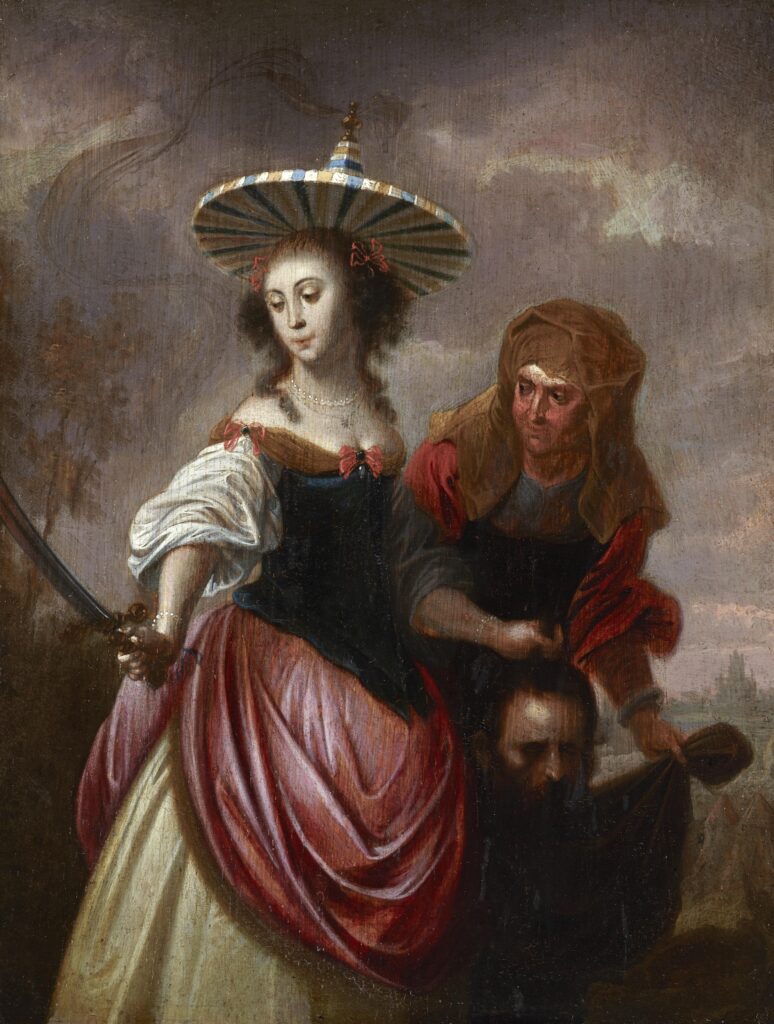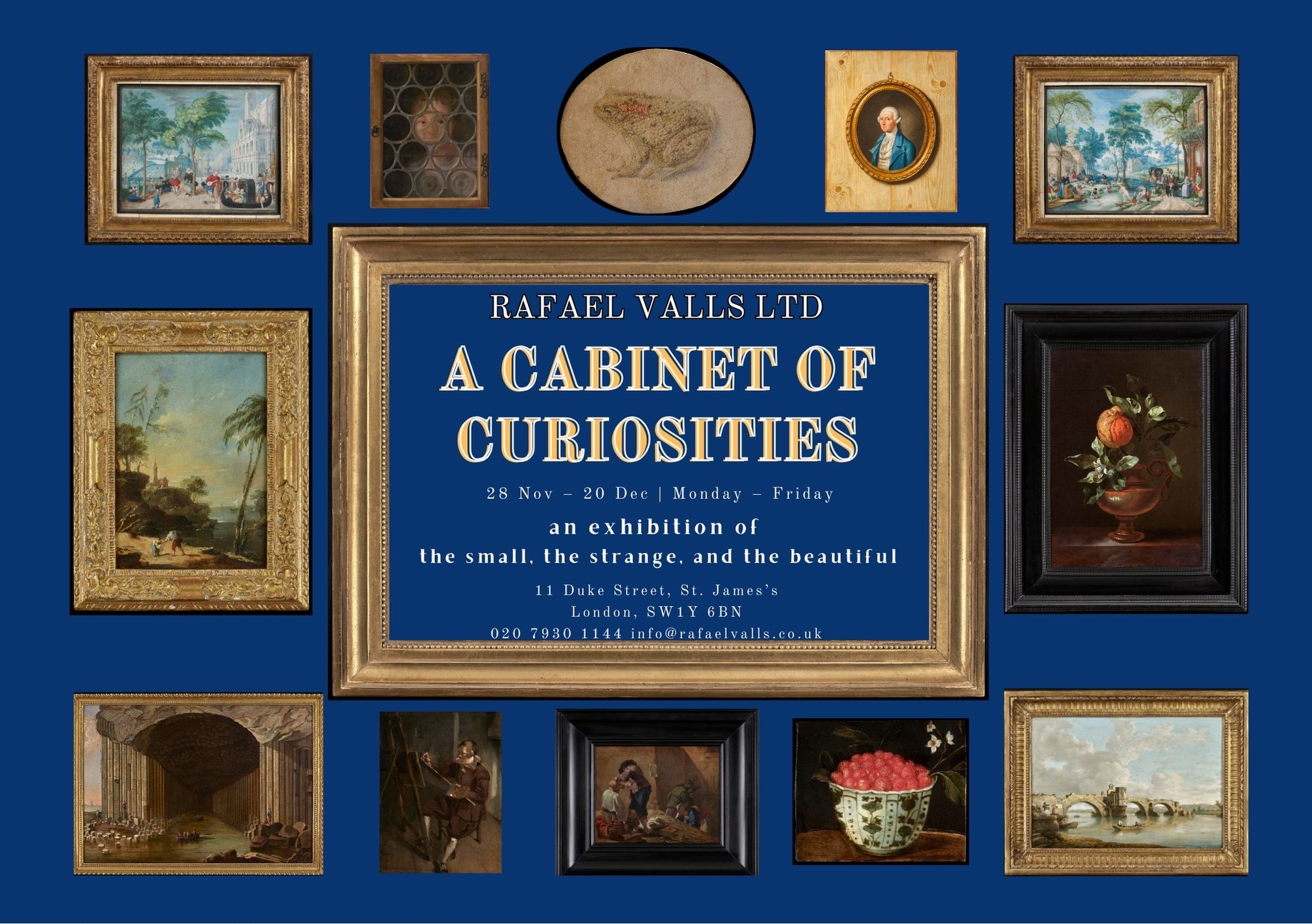Hieronymous Janssens
Antwerp 1624 - 1693
Judith with the Head of Holofernes

Exhibitions:
Essay:
Hieronymus Janssens began his career as a pupil of Christoph van der Lamen, the painter of genre and interior subjects. Contemporary documentation shows that in 1637 he began his apprenticeship in van der Lamen's studio and that in 1643 he was elected a member of the Guild of Saint Luke in Antwerp.
The artist specialised in depicting festival scenes with dancing figures and musicians playing on their instruments. These are always very lively and exceptionally well drawn, with the fine details of materials and jewellery especially evident.
In 1650 he is recorded as having been married to Catharina van Dooren by whom he had a daughter. He was commissioned by Don Juan of Austria to paint numerous pictures and he became a firm favourite at Court. Janssens was also known to have painted the staffage in several pictures by the architectural painters, Jan Gherinx and Wilhelm van Ehrenberg.
-
The subject of this work is unusual for Janssens who very rarely painted religious subjects, though the manner is entirely his own. Known as 'de danser' for his scenes of dancing parties, Janssens figures are almost always painted in graceful poses with young women elegantly dressed in form fitting bodices with long limbs, pearly skin and pointed chins.
A particularly pleasing feature in our painting is the conical hat worn by Judith with its fluttering silk pennant. This flamboyant headgear is redolent of the exotic and immediately enlivens the grisly scene. Though rare the hat is not without precedent in contemporaneous Dutch art. A similar hat is worn by a woman in a tronie by Caesar van Everdingen ('Woman in a Large Hat' Rijksmuseum SK-A-5005).
Dr. Gregor Weber relates that the hat was considered by the Dutch to be typical attire worn by gypsies and it had associations with the presumed land of the gypsies' origin: Egypt. Because of this the hat can be seen in a handful of pictures of biblical stories which take place in Egypt, but they also appeared more widely in Dutch society. These hats, according to Weber, provided an oriental affectation for masquerades and pageantry in the fashionable circles around the House of Orange in the mid-1600s. A self-portrait by Louise Hollandine, Princess Palatine, from the 1640s shows the artist wearing a similar hat. While Judith was not Egyptian, Janssens appears to have been latching on to this trend which could imbue Judith with both oriental elegance and royal power.
Provenance:
Private collection, UK.
